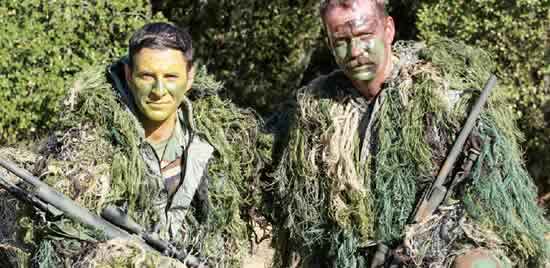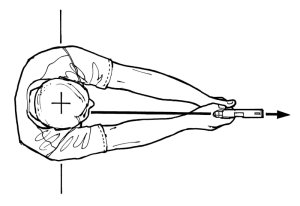Why the .308 is the best Cartridge

Since its 1952 debut, this round has aged well even as hot new ones have come online, thanks to
usefulness across military platforms, widespread availability and having downed a deer or two since.
Like a lot of you out there, I read a lot of gun magazines. Periodically, most magazines run an “everything old is new again” article about a particular weapon system or round. You know the ones I’m talking about; articles with catchy titles like “Best Revolvers for Combat.” What? I like a nice wheel gun as much as the next guy, but its time as a primary sidearm for combat has long gone.
In limited circumstances, such as a hammerless .38 as a last-ditch backup, it still has a tactical role. But by and large, the revolver’s gun-fighting days are behind it (regardless of how fast you can speed load it).
I can also make an argument that anything with an exposed hammer is also yesterday’s technology, but that’s a rant for another day. Another article that pops up from time to time is the utility of a stagecoach-style shotgun for home defense.
I’m not sure what person in their right mind would opt for a two shot weapon for home defense. Like the revolver, this seems like a great idea when you are at the range or tinkering (i.e. playing) with your guns at home. It will seem like a terrible idea when some bad guy is throwing down large volumes of lead at you from a handgun or rifle and you can only respond with two to six shots at a time before needing a reload.
Sorry, folks, sometimes the truth hurts With all that being said, old doesn’t necessarily equal obsolete. Sometimes something appears to be the best at everything, until it’s supplanted or replaced by other items that do specific things better.
Such is the case with the much maligned .308 round. It has lost some popularity in recent years, but it is arguably the best all purpose rifle round ever designed.
THE .308 HAS been around a long time. It was designed in 1952. It was the cartridge that powered the M14 Battle Rifle, the primary long gun for servicemen throughout the ’50s and well into the ’70s with National Guard and Reserve units.
It was the go-to round for sniper rifles, used extensively in every major conflict since Vietnam. It still feeds the military’s primary belt-fed weapon system, the M240, and is still the standard .30-caliber round for NATO.
So, what happened? Why did the .308 become the “old man’s cartridge”?
The .308 is really good at a lot of things, but other rounds are better in specific roles. Where the .308 is a jack of all trades, other rounds designed for one purpose have done a better job in the roles they were designed for. But none can fill all roles like the .308 can.

In the combat/close quarters battle role, the .223 is king. There is no denying it. When the M16 replaced the M14 as our nation’s primary service weapon in the 1960s, it permanently made the .308 a less acceptable combat round. The .223 round is lighter, meaning you can carry more of it.
More importantly, though, the recoil is more manageable, an important factor in combat. Select-fire M14s were notoriously difficult to control on full auto, whereas the M16 firing the .223 is much better. There are other factors at play here, such as weapon design, but that doesn’t change the fact that the bigger bullet kicks more.
In combat, he who puts the most rounds into his opponent generally wins. Recoil has an adverse effect on this. There are other specialty rounds like the .300 Blackout and .458 SOCOM that are recent developments that are also great CQB rounds. Their large caliber results in significant tissue damage and they marry up well with the AR platform.
But where all of these rounds fail in comparison to the .308 is range.
The .300 Blackout and .458 SOCOM aren’t designed for long distance, but a .223 round with a high velocity should be able to reach out and touch. It doesn’t, not when compared to the .308.
A .223 coming from a long-barreled M16 is good out to around 600 yards, less with a short-barreled M4. A .308 round is effective out to about 1,000 yards. Big difference.
Another shortcoming of the .223 when used with an AR platform is how finicky it is with regard to twist rates and barrel lengths. Since the round is small it needs to tumble or break apart on impact with a target to do a lot of damage. When a .223 round is fired through the wrong barrel length/twist combo, it “icepicks” targets, going straight through and leaving a minimal wound cavity.
A .308 round is a significantly bigger round. Bullets are measured in grain weights. An average .223 round weighs around 55 grains, but a .308 is about 160 grains, almost three times as heavy. That results in harder hits down range that are less susceptible to barrel length and twist issues. The .308 is less affected by wind than its lighter cousin.
This also makes it a good dual-purpose round for CQB, as well as sniping.
The .308 round works well in an AR platform. For every major .223 tactical rifle made, there is a .308 caliber variant. SCAR, HK and Galil all have .223 variants as well as a big brother .308. Still not the greatest on full auto but significantly better than firing it from the M14.
FOR MANY YEARS the .308 was the primary sniper caliber for military and law enforcement. Bolt-action Remington 700s were the staple of Army and Marine snipers for many years. I carried a long-barreled 700 as a SWAT team sniper and found it more than adequate for what I needed.
During the Global War on Terror it was found that engagements were at longer distances than previously encountered. The .308 had a hard time zapping targets over a grid square away. Weapons like the .338 Lapua came into their own.
A good .338 Lapua fired from a quality rifle can get hits at 1,500 yards and further. That’s 50 percent farther than .308. The .338 not only travels farther, but has a flatter trajectory. In a side-by-side sniper competition, the .338 Lapua is superior.
Where the .308 has an advantage is in flexibility and modularity. There is a limited number of semi-auto .338 rifles out there but they aren’t made in the same quantity, nor have they seen as much use in combat, as .308 rifles.
The old man M14 has been an active participant in the wars in Afghanistan and Iraq. Many Vietnam era weapons were dusted off and used in their old wooden stock configuration. Others were modified with high-quality adjustable synthetic stocks, married with high-quality optics, turning them into excellent sniper weapons.
AR platforms such as the SR-25 have been in the war since the beginning. Many snipers prefer them because they can double as combat rifle when needed, albeit one that’s a little ungainly due to weight and long barrel length.
A bolt-action gun doesn’t lend itself to building clearing or close-quarters gun fights with opponents armed with AK-47s. An SR-25 type rifle also prevents the need to carry multiple weapon systems.
Carrying a bolt gun in a drag bag on your back while using an AR platform to defend yourself, with incompatible rounds, does not result in an optimal tactical situation.
As mentioned previously, the .308 is the standard NATO round. In a pinch, a sniper could pull a few rounds of .308 off a belt of machinegun ammo and use it, with the understanding that it wouldn’t be as accurate as a match-grade round.
Traditionally, in the United Kingdom sniper ammo is in fact machine gun ammo. The first round produced in the lot is reserved for sniping, while the rest are linked together and fed to machine guns.
Using nonstandard ammo like the .338 Lapua presents logistical issues as well. Anywhere the U.S. military goes, it brings .308 with it. It’s a common enough cartridge that it can be found in most other countries too. Try finding .338 Lapua if your logisticians haven’t forecasted the need for it and ensured it is well stocked.
There is no such thing as “overnight delivery” in many parts of the world.
The .338 Lapua isn’t going away, but it’s important to note that it’s a round designed for a particular type of combat. It really has come into its own in Afghanistan where almost all engagements are at a very long distance, unparalleled in previous American combat experience. So, in a way, it’s a round designed to fit a particular type of warfare (or war).
Which explains why the .308 was the preeminent sniper round up until that time.
Outside the tactical realm, .308 is a really good hunting round for medium to large game. It’s a safe bet that .308 (along with .30-30 and .30-06) has accounted for more North American game than all of the other calibers combined. I don’t think I’d go elephant hunting with it, but I’d feel confident using it on most large game.
So, despite its reputation as the old man in town, .308 is the best all-purpose round available. It works in every major assault weapons system, it is compatible with belt-fed weapons, it still functions well as a sniper weapon, and it can be found just about everywhere. So, this old man recommends it. ?
Story and Photos by Nick Perna
Editor’s note: Nick Perna is a sergeant with the Redwood City Police Department in northern California. He has spent much of his career as a gang and narcotics investigator. He served on a multi-jurisdictional SWAT team as an entry team member, sniper and team leader. He previously served as a paratrooper in the US Army and is a veteran of Operation Iraqi Freedom. He has a master’s degree from the University of San Francisco.



